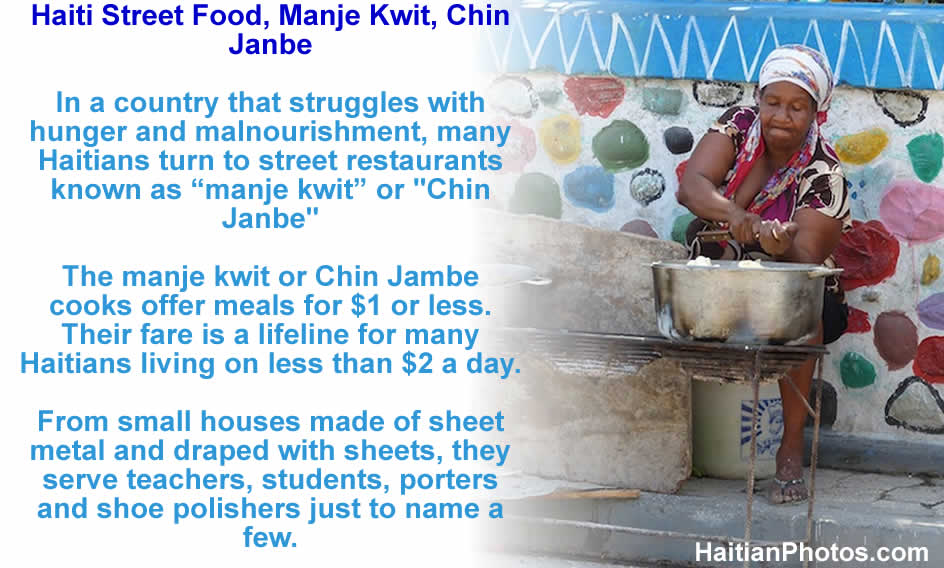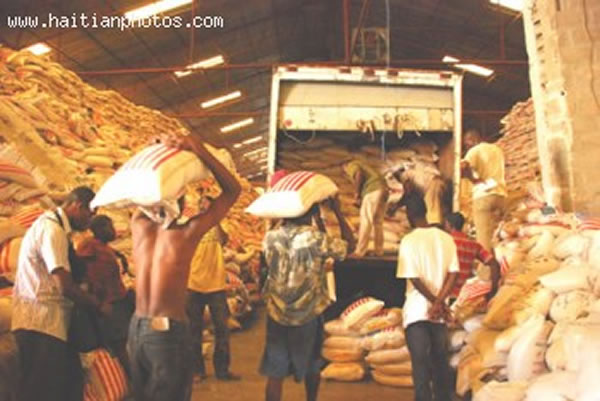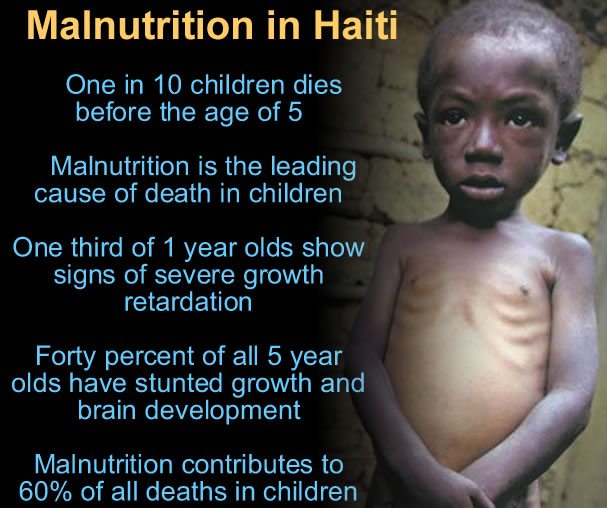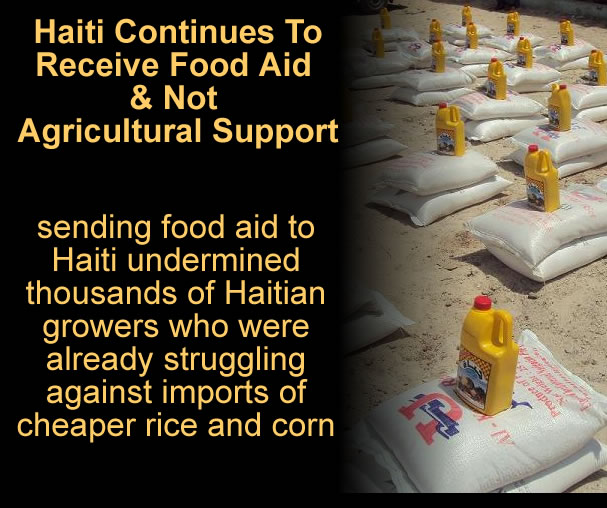ADVERTISEMENT
Food Aid
Haiti Street Food, manje kwit or Chin Janbe, for $1 or less
In a country that struggles with hunger and malnourishment, many Haitians turn to the informal street restaurants known as "manje kwit" or "Chin Janbe" that line many of the city's major streets.
The manje kwit or Chin Jambe cooks offer meals for $1 or less. Their fare is a lifeline for many Haitians living on less than $2 a day.
From small houses made of sheet metal and draped with sheets, they serve teachers, students, porters and shoe polishers just to name a few.
If you have visited Haiti but never tasted their street food, your exploration is yet incomplete. You can identify over one hundred and fifty street food items in the informal street restaurants that line many of the city's major streets. Haitian foods are a blend of influences. Creole cuisine originates from a blend of several culinary styles that populated the western portion of the island of Hispaniola, namely the French, African, Taíno natives, and Spanish influence. Mixed roots and spices, basic yet zippy, simple and grounded by the reality of the tropics and the back-story of its African heritage, yet touched with a hint of French complexity. Street food is comparatively a new concept in Haiti. Vendors sit under umbrellas on every Port-au-Prince sidewalk peddling fare like fried plantains, chicken, and spaghetti. Some enterprising Haitians, however, are consciously taking a cue from food truck scenes abroad and adding their own Creole twist.
Haitian Street Food Sellers are known as 'Chin Janbe'--they are the lifeline for many of the capital's food-insecure resident. The street food venders are simple poor men who prepare food in their small houses and shanties. Some of them are great chefs who sell their foods in the stalls near bus stations, churches or on the edges of local markets and serve local people at an affordable price like 75 gourdes ($1) or less, while the average cost of a plate of food in basic Creole restaurants here is 250 Haitian gourdes ($4). Haiti is one of the poorest countries in the Western Hemisphere, where most citizens live on less than $2 a day.
In early July when protests against price hikes paralyzed Port-au-Prince, these informal street chefs known as "manje kwit, without prior notice, were forced close their stalls. They could not sell their prepared foods. Whatever they had, had to share within the family and rest distributed free to their neighbors. Thus, they lost a major part of their savings cum investment in a single day. During the five days of protest, many of their poor clients struggled to find food which they can afford to buy.
Replacement of native Haitian rice with cheaper US imports
Something that both the Haitian government and President Bill Clinton come to regret. In 1993, U.S. President Bill Clinton encouraged Haitian President Jean-Bertrand Aristide to drop all protective tariffs and allow US to export rice to Haiti.
This so called aids to Haiti does nothing to boost local food production capacity. In addition for a government to allow this without any long term plan to increase local production is irresponsible at least. This policy created a level of dependency and caused further decline in Haitian agriculture.
Is there any one looking out for the future of Haiti or is it just that everyone in a particular situation is trying to do what is best for themselves. Unfortunately, it's every man for himself.
Malnutrition in Haiti
Malnutrition in an underprivileged and poor developing country like Haiti is a major critical problem. Poverty is its main root cause over other factors like economic, environmental, and social reasons. One in every 10 children in Haiti dies of malnutrition. One of the leading factors (60%) of child death is malnutrition. Around 40% of the 5 year children indicate stunned growth and poor brain development. The most common effects of malnutrition in Haitian children are: lack of adequate immune system, erratic behavior changes, 2 in every 10 are underweight, slow development and cognitive deficiency. Today around 6.7 million, or a staggering 67% of the population goes without food some days. Most of them have either limited access to the food or can't afford a balanced diet and as many as 1.5 million of them face malnutrition and other hunger-related problems.
Haiti Receiving Food Aid instead of Agricultural Support
In the months following the 2010 earthquake, the US government has provided $140 million subsidy to US farmers, and USAID sent 90,000 metric tons American of crops to Haiti. Unquestionably, this was a necessity because it fed many. However, in some other senses, these are negatively affecting rural Haitians and farmers in a major way. Instead of receiving food aid if the international donors support Haiti's agricultural sector and provide food to those only in need and purchase the entire Haitian rice crop over the next two years or so, this may help Haiti to become more self-sufficient in agriculture. US food aid programs are practically designed to encourage food imports from US. Haitians are importing 80% of their rice consumption from US because it is cheaper to import than locally produce.





 Royal Decameron Indigo and White sands
Royal Decameron Indigo and White sands  Bouki Ak Ti Malice, Story Of Intelligence Vs Ignorance For...
Bouki Ak Ti Malice, Story Of Intelligence Vs Ignorance For...  All inclusive Royal Decameron Indigo
All inclusive Royal Decameron Indigo  Jovenel Moïse nominated Jean Henry Céant as prime minister of...
Jovenel Moïse nominated Jean Henry Céant as prime minister of...  The Petro Caribe Challenge hashtag
The Petro Caribe Challenge hashtag  Commissioner Frantz Pierre indicted for accepting bribes
Commissioner Frantz Pierre indicted for accepting bribes  Jack Guy Lafontant resigns as Haiti Prime Minister
Jack Guy Lafontant resigns as Haiti Prime Minister  Meet Haitian-American professional baseball pitcher Touki...
Meet Haitian-American professional baseball pitcher Touki... 



